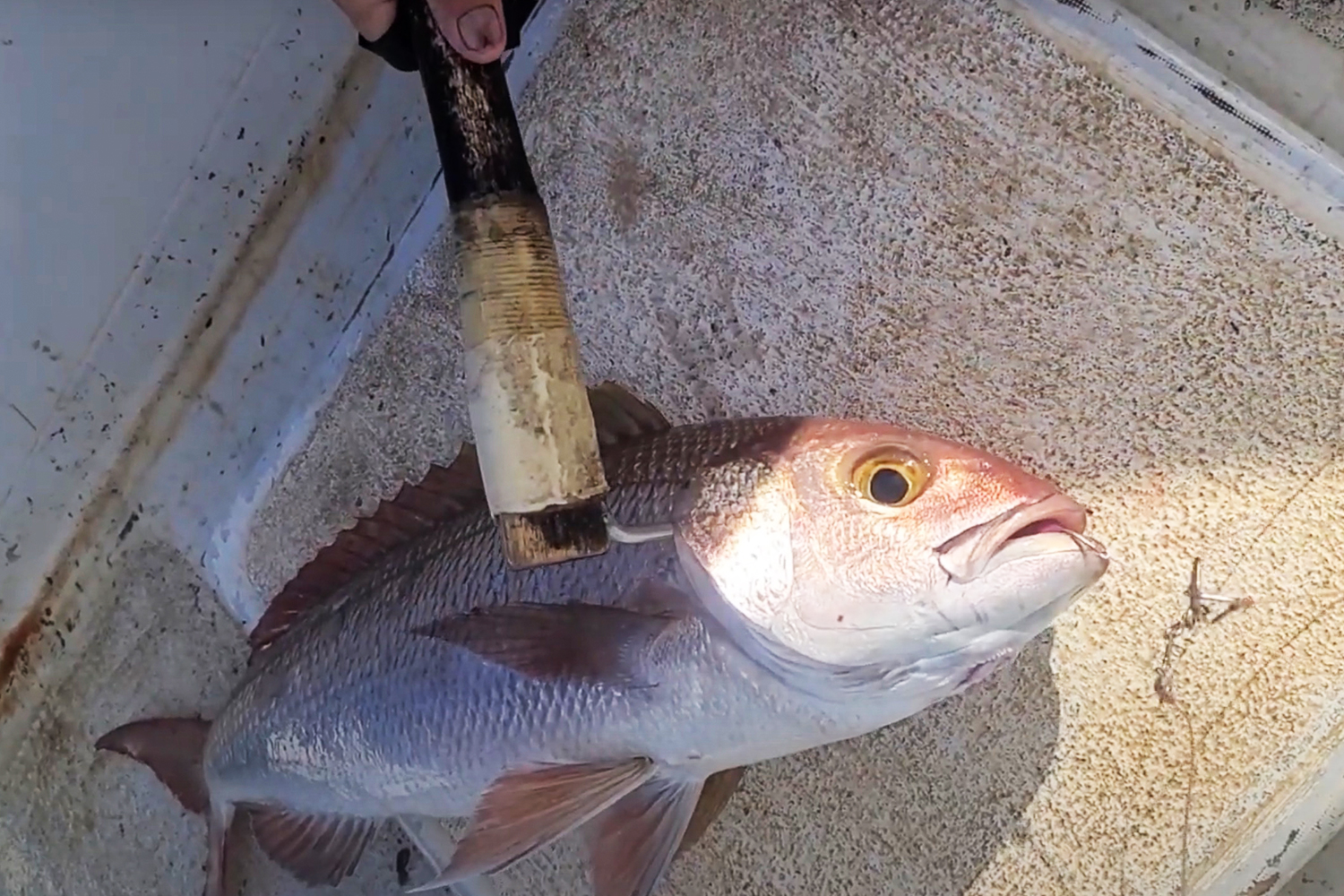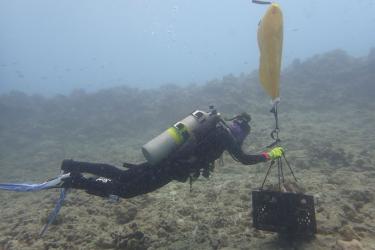In his typical dead-pan style, comedian Steven Wright once joked, “There’s a fine line between fishing and just standing on the shore like an idiot.”
But how do you find that line? How do you know what gear to use to catch Hawaiʻi bottomfish or the proper way to wash your reels between uses? How do you learn to immobilize a bottomfish to improve quality and keep it fresh for transportation?
Easy: the Pacific Island Fisheries Group’s video series, Pro Fishing Tips! In this NOAA-supported project, expert fishers provide advice for sustainable bottom and pelagic (open-ocean) fishing in Hawaiʻi. The videos highlight the basic gear, equipment, and nature of the fishery. They explain not only how to do things, but also the “why” behind the tips.
“The basis for the project was to take the knowledge from those who have been successfully and responsibly fishing to help the new guys coming out to fish,” said Clay Tam, Cooperative Fisheries Research Director for the group, which is known locally as PIFG. “We wanted to capture the fishery today and educate people how to be better fishermen.”
Passing on Knowledge
Historically, fishing knowledge and traditions in Pacific Island communities were passed down from generation to generation, often through oral history and chants. These instructions included everything from fishing techniques, to natural cycles of the fishery, to etiquette and responsibilities that sustain resources into the future.
While some families still carry on this generational knowledge, many novice fishers don’t have that guidance. What they do have, however, are smartphones.
“Practically everybody has one of these in their pocket,” Tam said. “Today, when looking at this generation, visual media is so important. It’s how people communicate. So how do you get the message out there? Videos and social media.”
And getting the message out there is vital. There has been a long-term decline of younger fishers entering the Pacific Island bottomfish and pelagic fisheries, according to the Pacific Island Fisheries Group. The videos document fishing practices in Hawaiʻi today, which is important because they will become “a reference point in the fishery that will be searchable for future generations,” Tam said.
Another reason the group put together the videos: the COVID-19 pandemic caused an influx of new fishers in Hawaiʻi. Some of these fishers don’t have fishing knowledge or an awareness of local etiquette.
For example, a new fisher might copy a seasoned fisher and drop their line close to them. But the new fisher might not know that drifting (from being unanchored) and spreading palu (chum) will eventually disperse a school of fish. This impacts someone who has already worked hard to initially draw the school to their location. It can be detrimental to seasoned fishers who depend on fishing for their livelihood.
Just because someone has fancy gear, it doesn’t necessarily mean they know how to fish, Tam said. “But they may want to learn.”
One essential thing all fishers have to learn is sustainable fishing practices. Those include rotating areas where you fish to avoid overfishing or putting too much fishing pressure in one spot. This practice isn’t mandated or regulated, but it is a “local protocol” that has been passed down through generations.
“We encourage all new fishermen to fish, but do it responsibly,” Tam said. “It is our kuleana (responsibility) to one another and to our resources to do it right—to sustain life and resources for future generations.”
Pro Fishing Tips
The first set of “how to” fishing videos focuses on small boat bottomfishing for the “Deep 7” bottomfish in Hawaiʻi—onaga, ehu, ʻōpakapaka, kalekale, gindai, lehi, and hapuʻupuʻu. Each video covers a fundamental aspect of fishing for these bottomfish:
- Proper handling of bottomfish
- Targeting and rotating spots
- Bottomfish gear
- Caring for your reels
- Bottomfishing rig
The second set focuses on pelagic trolling and jig fishing for various Pacific Island pelagic species, including tunas, marlin, mahimahi, and ono:
The first set of videos feature instructions from Eddie Ebisui III, a third-generation bottom and pelagic fisher. The second set features instructions from Butch Farm, another generational fisherman who owns The Hobbietat, a well-known and respected fishing supply store established in Hawaiʻi in 1975. It also features Mark Kimura, an instructor at the Honolulu Community College’s small vessel fabrication and repair program.
Tapping well-respected experts in our community is critical in teaching fishers how to catch fish, and also how to do it safely and responsibly. “If the information comes from an expert fisherman who actually lives it,” Tam said, “others may follow and perhaps it will make a difference for a better future fishery.”
This project was funded through the Sustainable Recreational and Non-Commercial Fishing Program. The Program supports both recreational and non-commercial fishing projects in the Pacific Islands region that improve sustainable fishing opportunities, maintain stability of fish stocks, and protect cultural fishing traditions.





